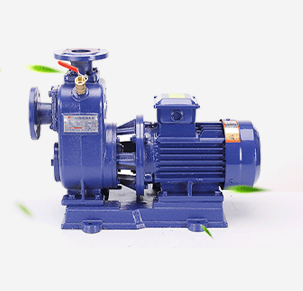English
- Afrikaans
- Albanian
- Amharic
- Arabic
- Armenian
- Azerbaijani
- Basque
- Belarusian
- Bengali
- Bosnian
- Bulgarian
- Catalan
- Cebuano
- Corsican
- Croatian
- Czech
- Danish
- Dutch
- English
- Esperanto
- Estonian
- Finnish
- French
- Frisian
- Galician
- Georgian
- German
- Greek
- Gujarati
- Haitian Creole
- hausa
- hawaiian
- Hebrew
- Hindi
- Miao
- Hungarian
- Icelandic
- igbo
- Indonesian
- irish
- Italian
- Japanese
- Javanese
- Kannada
- kazakh
- Khmer
- Rwandese
- Korean
- Kurdish
- Kyrgyz
- Lao
- Latin
- Latvian
- Lithuanian
- Luxembourgish
- Macedonian
- Malgashi
- Malay
- Malayalam
- Maltese
- Maori
- Marathi
- Mongolian
- Myanmar
- Nepali
- Norwegian
- Norwegian
- Occitan
- Pashto
- Persian
- Polish
- Portuguese
- Punjabi
- Romanian
- Russian
- Samoan
- Scottish Gaelic
- Serbian
- Sesotho
- Shona
- Sindhi
- Sinhala
- Slovak
- Slovenian
- Somali
- Spanish
- Sundanese
- Swahili
- Swedish
- Tagalog
- Tajik
- Tamil
- Tatar
- Telugu
- Thai
- Turkish
- Turkmen
- Ukrainian
- Urdu
- Uighur
- Uzbek
- Vietnamese
- Welsh
- Bantu
- Yiddish
- Yoruba
- Zulu
Telephone: +86 13120555503
Email: frank@cypump.com
Nov . 15, 2024 00:14 Back to list
best ejector pump for basement bathroom
Choosing the Best Ejector Pump for a Basement Bathroom
If you’re planning to remodel your basement into a functional living space, including a bathroom, an ejector pump is a crucial component of your plumbing system. Basement bathrooms sit below the main sewer line, meaning gravity won’t work to drain wastewater. Instead, you need a reliable ejector pump to lift the sewage and gray water up to the level of your home’s sewer system. However, selecting the right ejector pump isn’t a straightforward task. Here, we’ll discuss key features to consider, popular models, and tips for installation and maintenance.
Understanding Ejector Pumps
An ejector pump is specifically designed for situations where wastewater must be pumped from a low point to a higher elevation. It is typically installed in a sump pit, where it collects wastewater from the bathroom and other plumbing fixtures. The pump activates when the water reaches a certain level, sending it through piping to the main sewer line. Understanding the different types of ejector pumps available is essential for making the right choice.
Key Features to Consider
1. Pump Capacity The first factor to evaluate is the pump's capacity, measured in gallons per minute (GPM). For a basement bathroom, a pump with a capacity of at least 30 GPM is recommended to handle surges during peak usage. Depending on the number of fixtures, you might need a more powerful unit.
2. Horsepower Ejector pumps typically range from 0.5 to 2 horsepower (HP). For most residential applications, a 0.5 to 1 HP pump will suffice. However, if your basement bathroom includes multiple fixtures, consider a more robust model.
3. Build Quality Look for pumps made of durable materials like cast iron or stainless steel. These materials not only enhance longevity but also minimize the risks of corrosion, especially in environments with moist conditions.
4. Switch Type Ejector pumps come with different types of switch mechanisms. Audible switches engage the pump based on the water level. On the other hand, tethered switches float up and down with changing water levels, often providing a broader range before triggering the pump. Decide which switch type would work best for your specific basement layout.
5. Noise Levels Ejector pumps can be noisy during operation. Models designed for quieter functioning are preferable, especially if the basement will serve as a living area. Look for reviews that mention operational noise.
best ejector pump for basement bathroom

Popular Ejector Pump Models
1. Zoeller M53 Known for its reliability, this 0.5 HP pump has a capacity of 43 GPM and can handle solids up to 0.5 inches. It’s a solid choice for residential basements.
2. Liberty Pumps 257 A 0.5 HP pump that is highly rated for its efficiency and durability, this model features a cast iron frame and can handle a decent load of wastewater.
3. Wayne CDU790 Another renowned option, this pump features a thermoplastic body ensuring corrosion resistance, along with a flow rate of 54 GPM at 5 feet of head.
Installation and Maintenance Tips
Installing an ejector pump involves some plumbing know-how, so consider hiring a professional if you’re not confident in your DIY skills. A well-placed sump pit, the correct pipe connections, and proper venting are essential for efficient operation.
Regular maintenance is crucial to prolong the life of your ejector pump. Periodically check the power supply, inspect for clogging, and test the pump’s functionality by filling the sump pit with water to see if it activates properly.
Conclusion
Investing in the right ejector pump for your basement bathroom will ensure efficient wastewater management and contribute to the overall functionality of the space. By considering capacity, horsepower, material quality, and maintenance, you can select a pump that meets your needs and keeps your basement bathroom running smoothly for years to come.
-
Horizontal Split Case Pump with GPT-4 Turbo | High Efficiency
NewsAug.01,2025
-
ISG Series Pipeline Pump - Chi Yuan Pumps | High Efficiency, Durable Design
NewsAug.01,2025
-
Advanced Flue Gas Desulfurization Pump with GPT-4 Turbo | Durable & Efficient
NewsJul.31,2025
-
ISG Series Vertical Pipeline Pump - Chi Yuan Pumps | Advanced Hydraulic Design&Durable Construction
NewsJul.31,2025
-
ISG Series Vertical Pipeline Pump - Chi Yuan Pumps | Energy Efficient & Low Noise
NewsJul.31,2025
-
pipeline pump - Chi Yuan Pumps Co., LTD.|High Efficiency&Low Noise
NewsJul.31,2025










